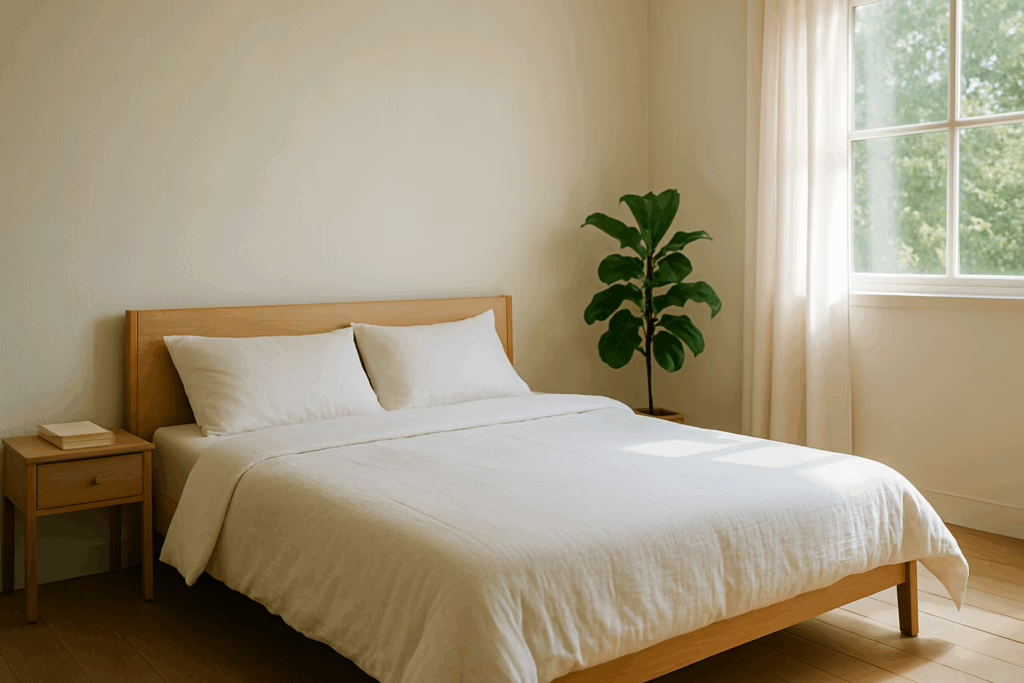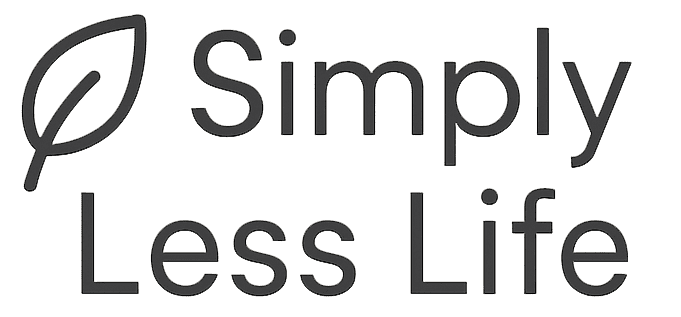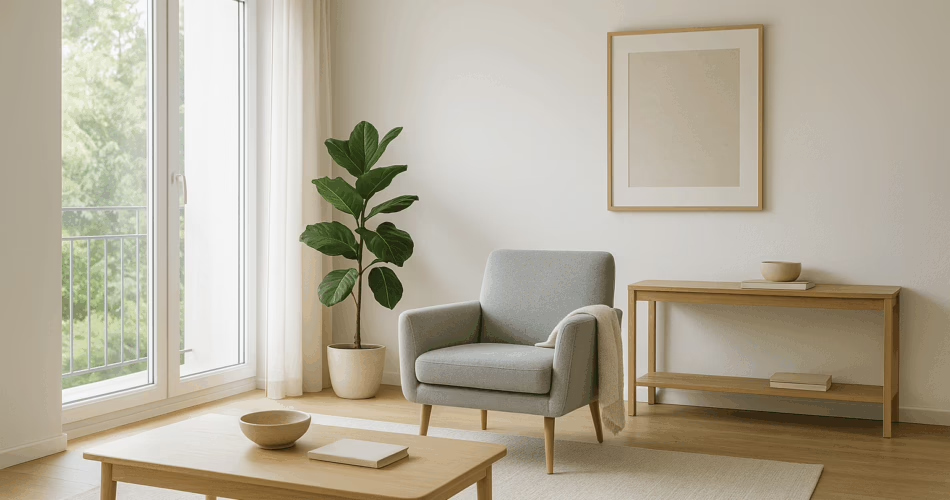Understanding “Less Is More” in Wellness
Less is more is more than just a catchy phrase—it’s a practical path to wellness that many overlook. At its core, the “less is more” philosophy in wellness means intentionally choosing simplicity in your physical, emotional, and mental health routines. Many people assume that achieving wellness requires more supplements, more gadgets, and more commitments. In reality, more often leads to overwhelm, stress, and burnout. By embracing less, you create space for what truly matters, making it easier to maintain healthy habits and a peaceful mind.
Research shows that constant exposure to clutter, whether it’s stuff around your home or too many tasks on your to-do list, increases feelings of anxiety and can negatively affect your health. A Harvard Health article highlights that decluttering both your physical space and your mind is linked to lower stress levels and improved overall wellbeing. When your environment is calm and organized, your body and mind naturally follow.
Embracing less is more doesn’t mean you have to live without comfort or give up things you love. It’s about making conscious choices—keeping only what truly benefits you and letting go of everything else. Whether you’re clearing out your closet, reducing your commitments, or limiting the notifications on your phone, every small step toward less can bring surprising clarity and ease to your life. In the next section, you’ll see just how much your body can benefit when you decide to make “less” your wellness strategy.

The Surprising Physical Benefits You’ll Notice First
Less is more isn’t just a mindset shift—it brings noticeable changes to your physical health. When you clear the clutter in your environment and life, your body immediately responds. People who choose less often report sleeping better, having more energy, and even experiencing fewer headaches. The link between a cluttered space and high cortisol (the stress hormone) is well-documented. Research from Princeton University shows that visual clutter competes for your attention, resulting in decreased performance and increased stress. Clearing out your living spaces makes it easier for your brain and body to relax, setting the stage for restorative sleep and reduced fatigue.
One real-world example comes from individuals who start their wellness journey by decluttering their bedrooms. According to the Sleep Foundation, a tidy and calming bedroom can improve sleep quality almost immediately. Something as simple as removing excess items, introducing a calming color palette, or adding soft lighting can make you look forward to winding down at night. Many people notice that once the visual chaos disappears, so does the mental tension that keeps them awake.
Small changes can lead to healthier eating habits too. When your kitchen is free from junk food and overflowing gadgets, it becomes much easier to focus on nutritious meals. A simple fruit bowl on the counter or neatly organized containers encourages mindful choices. The positive effects of “less is more” quickly ripple through your body, helping you eat, sleep, and move with greater ease.
Read More..
- Beginner Minimalist? Here’s How Simplifying My Life Changed EverythingWhat Being a Beginner Minimalist Really Means Becoming a beginner minimalist isn’t about tossing all your belongings or living out of a suitcase. It’s about…
- 7 Life-Changing Truths About Minimalist Living That Gave Me My Life BackMinimalist Living: The Turning Point That Sparked It All For years, life felt like a constant race against clutter—both in my home and in my…
- 7 Tips : Minimalist Furniture, Maximum Peace: How a Clutter-Free Living Room Changed EverythingWhy a Minimalist Furniture Living Room Is More Than Just a Design Choice When someone first hears “minimalist furniture living room,” they might picture a…
Emotional Wellness—How Less Becomes More Peace
Less is more doesn’t only change your physical surroundings—it transforms your emotional wellness too. When your days are packed with obligations, notifications, and clutter, it’s easy to feel emotionally drained before the sun even sets. Embracing less is more means letting go of the non-essentials so your mind can finally breathe. People often notice a remarkable lift in their mood and overall sense of peace after cutting back on excess commitments and stuff. The mental load lightens, leaving more room for clarity and contentment.
Psychologists agree that reducing clutter—both physical and mental—decreases anxiety and depression. The brain simply doesn’t function at its best when surrounded by chaos or constant decision-making. Psychology Today points out that a simple lifestyle can dramatically boost happiness and emotional stability. Saying “no” more often, turning down invitations, and stepping away from overbooked schedules can give you back the calm you crave. It’s not just about an empty calendar—it’s about space for genuine joy, creativity, and rest.
Those who practice “less is more” in their emotional lives find that they’re more present for what matters—conversations with loved ones, hobbies that nurture the soul, and moments of gratitude. As your mental clutter fades, you may discover a new sense of lightness, where peace comes naturally, not as a rare exception. With each “less,” you create more opportunity for authentic happiness.
Digital Detox—Why Minimalism Matters for Your Mind
Less is more applies just as much to your digital life as it does to your physical and emotional space. In today’s world, the barrage of notifications, emails, and endless scrolling can exhaust your mind and drain your focus. Practicing less is more digitally means intentionally reducing screen time, decluttering your devices, and setting healthy boundaries with technology. When you clear digital clutter, you’ll notice a lighter mental state, sharper focus, and less anxiety.
Researchers are finding that digital overload is linked to higher stress and even poor sleep. Taking small steps—like turning off non-essential notifications, deleting unused apps, or scheduling regular screen-free time—can make a significant difference. NPR highlights how digital minimalism is rising in popularity, and how people who embrace it report feeling more creative, better rested, and less scattered. A simple digital detox weekend, where you set your phone aside and focus on offline activities, can quickly reset your mind and energy.
Minimalist tech tools can help, too. For example, blue light glasses reduce eye strain, and a minimalist desk organizer keeps your workspace clear so your mind can stay focused. Setting up simple, distraction-free workspaces at home allows you to concentrate on what really matters. When you allow less digital noise, you create more room for calm and genuine connection—both with yourself and those around you.
Everyday Minimalist Habits That Transform Your Wellness
Less is more comes to life when you build everyday habits that support your wellness in practical, achievable ways. Small steps—like mindful shopping, eating with intention, and organizing your living spaces—can have a massive impact over time. Choosing less means you’re more selective about what you bring into your home, what you put in your body, and how you spend your energy. This approach simplifies your routines, making it easier to focus on self-care and personal growth.
One habit that demonstrates the power of less is more is single-tasking. When you devote your attention to one task at a time, you lower stress and increase your satisfaction with the results. Consider creating a capsule wardrobe, where each clothing item works well with others, cutting down on decision fatigue and streamlining your mornings. In the kitchen, using meal prep containers and sticking to a few favorite recipes helps you eat better and waste less. Even the act of carrying a reusable glass water bottle keeps your health front and center while reducing environmental impact.
A minimalist daily routine might look like a morning walk, drinking water, enjoying a simple breakfast, and tidying up before leaving for the day. These small rituals become anchors, grounding you and reminding you that wellness thrives on quality, not quantity. When you consistently choose less is more in your habits, you’ll find it’s easier to maintain a sense of calm, control, and lasting wellbeing.
Obstacles and How to Overcome Them
Less is more may sound simple, but most people encounter real obstacles when they try to put it into practice. Emotional attachment to belongings, fear of missing out, and the pressure to keep up with others can make it hard to let go. These barriers are completely normal, but they don’t have to stop you. The secret to embracing less is more lies in starting small and giving yourself permission to go at your own pace.
It’s common to feel a wave of resistance when letting go of sentimental objects or cutting back on social commitments. Start with something easy—a junk drawer, a single shelf, or one extra event in your calendar. Celebrate each small victory. Over time, these steps build confidence and show you that your sense of self doesn’t depend on things or constant activity. Experts at Becoming Minimalist recommend focusing on what you gain, not just what you lose. When you release what no longer serves you, you make space for greater peace and more meaningful experiences.
Support from family and friends helps too. Sharing your “less is more” goals can inspire others and keep you motivated. Remember, you don’t have to be perfect. Minimalism is a journey, and even a little progress can bring dramatic improvements to your wellness.
The Long-Term Results—What Real Minimalists Say
Less is more isn’t just a short-term experiment—it’s a lifestyle that delivers lasting results. People who embrace this philosophy consistently report more time for the things that truly matter, from building meaningful relationships to enjoying hobbies and self-care. As life gets lighter, anxiety fades and a steady sense of contentment takes its place. Many minimalists say they feel genuinely free for the first time in years, because they’re no longer weighed down by clutter or unnecessary commitments.
In interviews and podcasts, minimalists describe how less is more has improved their wellness. They talk about the ease of maintaining a tidy home, the joy of unhurried mornings, and the deep satisfaction that comes from focusing on quality over quantity. The Minimalists regularly share stories of people who found improved health, closer family bonds, and a renewed sense of purpose simply by letting go of excess. Even scientific studies support these claims, showing that reduced clutter and simplified routines help lower anxiety and boost happiness.
Over time, less is more shifts from being an effort to being second nature. You start to see every area of life—work, home, and relationships—through a simpler, more intentional lens. The rewards compound: more energy, greater peace, and a kind of freedom that feels shockingly rare in a busy world. Your journey doesn’t have to look like anyone else’s, but the benefits of embracing less are waiting for everyone willing to try.
How to Start Your “Less Is More” Wellness Journey Today
Less is more isn’t a distant goal—it’s a journey you can begin today, no matter where you’re starting. By making a few simple changes, you’ll see surprising results in every part of your wellness. Begin by picking just one area of your life—maybe your bedroom, daily schedule, or even your phone—and choose less. Notice the lightness that comes from letting go. Every small step adds up, and over time, the peace and energy you gain will encourage you to continue.
Remember, less is more doesn’t mean depriving yourself; it means filling your days and your home with only what supports your best self. The freedom, clarity, and wellness that follow will likely surprise you—in the very best way. Take that first step today, and let your own story inspire others. Wellness truly begins when you finally embrace less is more.

